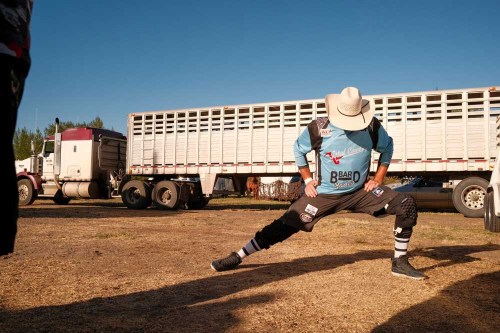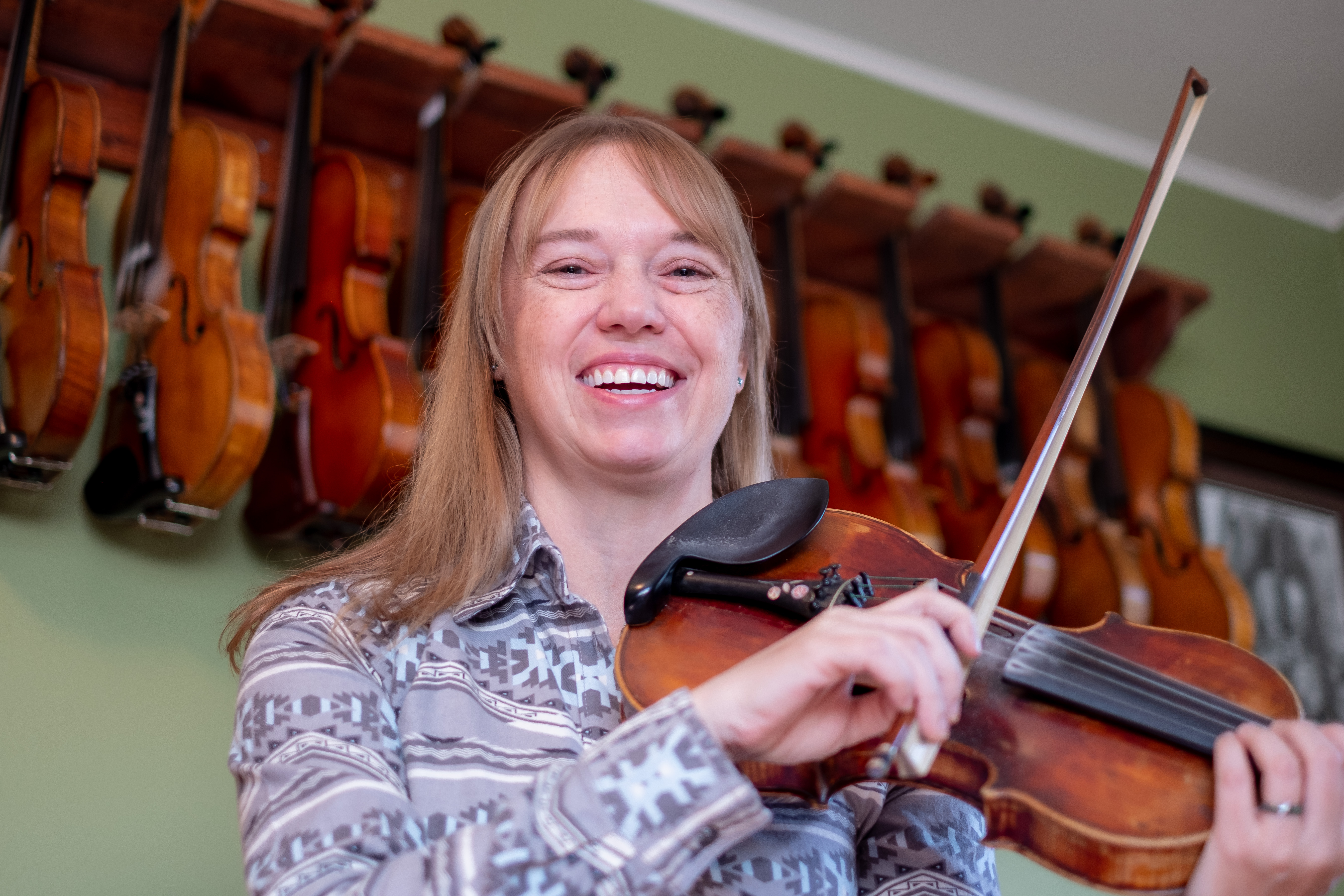Making a smooth go of bull riding
Published 9:00 am Saturday, June 12, 2021

- Sean Peterson stretches and limbers up prior to entering the arena Thursday, June 10, 2021, at the Eastern Oregon Livestock Show in Union. Peterson, along with brothers Miles and Ryan Manning Barry, are bullfighters tasked with controlling the bulls at the Ed Miller Xtreme Bullriding event and rescuing cowboys after they are off the bulls.
UNION — Blake West had a long day.
For most people, the Ed Miller Xtreme Bull Riding event at the 2021 Eastern Oregon Livestock Show started at 6:30 p.m. Thursday, June 10, and finished a little over two hours later. For West, the event started at 8 a.m. and didn’t finish until long after the bulls were done bucking and the crowd had gone home.
Trending
West, a Union High School graduate and Blue Mountain Community College rodeo coach, is a pickup man for bull riding shows — in other words, during every ride, he waits on horseback to steer the bull to the exit. He said he considered this year’s show a success, which he attributes to the event planners.
“The guys here at the stock show do a great job. This is my favorite rodeo all year,” he said. “It’s like a family and high school reunion every time it happens, and I really do love it.”
However, being a pickup man requires more than two hours of work. Throughout the day, West was constantly sorting, gathering and transporting livestock, all to ensure the main event ran smoothly.
Out of 39 bull riders, Payton Fitzpatrick and Ruger Piva tied for first place with scores of 84. Each of them earned $3,388 for the win. Heavy favorite Derek Kolbaba, a Wallowa County native who now lives in Walla Walla, was scheduled to compete but was not in attendance.
According to Chad Hutsell, stock contractor, none of this would be possible without endless hours of behind-the-scenes work.
“Everybody works hard, and they gotta love it to do it,” he said. “Everyone that is here is passionate about the sport and wants the event to go as best as possible, so that’s why we work hard.”
Trending
As many as 30 people worked to transport, sort and move the animals over the course of the day, including 46 bulls from various owners. According to Hutsell, everyone working at the rodeo helps each other throughout the event, from transporting the animals to releasing them into the arena to making sure that the bulls don’t injure the riders.
For bullfighter Sean Peterson, a Summerville native and 10-year bullfighter, the job seemed like a perfect fit.
“It comes naturally to me. I’ve always liked being around cattle and I’m fairly athletic, so I decided to combine the two,” he said.
Peterson has been bullfighting professionally for five years, which has taken him to rodeos all over the Pacific Northwest. He said he is grateful for the opportunity to live out his dream and make a living from it.
“When he first started, I had a hard time with it because it was hard for me to watch,” Peterson’s mother, Connie Buchanan, said. “And as he became better and better and more skilled and more respectful of the bulls and became a professional, then it was easier.”
The reality of bullfighting is there’s a limit on how long people can do it before their bodies can no longer handle it. According to Buchanan, Peterson particularly realized this after COVID-19 forced rodeo cancellations last year.
“The thing about it, though, is you get a year older each time,” Buchanan said. “And so, he has to be more agile and quick.”
Donnie Landis, a rodeo clown from Idaho, isn’t so worried about age. He’s been a professional rodeo clown since 1978 — with no plan to slow down anytime soon.
“The crowd here is super hospitable, and I hope to come here until I’m 100 years old,” he said.
Between riders and stages of competition, Landis ensured the audience always was entertained. A bull owner himself, Landis first started bullfighting and performing when he was 12. Now 61, he said he still looks forward to EOLS every year.
“The Eastern Oregon Livestock Show and rodeo is one of the best rodeos in the Northwest, and it’s a pleasure being part of it,” he said. “The country, the terrain around here is awesome, and it’s super fun being around the crowd here.”
Landis said many audience members don’t understand the connection between the livestock and the bullfighters and riders.
“There’s a lot that goes into this livestock that some people don’t understand,” he said. “People care about these livestock like some people care about their kids.”
Landis said it’s that respect that makes rodeos so important to keeping the culture of rural areas alive. As a fourth-generation rodeo cowboy, he said he has a responsibility to continue the tradition.
He’s not the only one with this mindset.
For West, who grew up in Union, the yearly livestock show serves as a reminder to uphold the legacy of rodeo life ingrained in him.
“I grew up with this rodeo, and I remember being 8 years old looking up at these guys,” he said. “So every rodeo I go to, I try to create a good image for the younger generation.”









